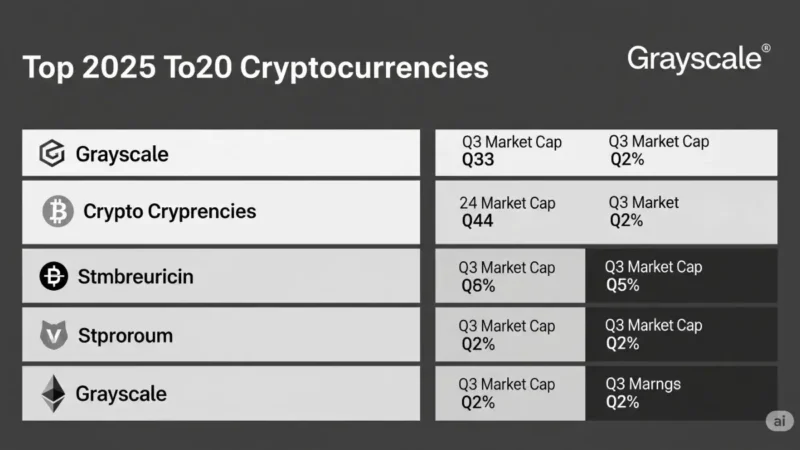The Role of Stablecoins in the Modern Economy

As we journey into the digital age, it is increasingly vital to comprehend the burgeoning world of cryptocurrencies. One of the transformative and rapidly emerging aspects of this digital financial system is the concept of Stablecoins. These digital assets, unique in their stability, have begun to redefine the landscape of trade, investment, and financial inclusion. This discourse is intended to examine the essence of the basics of stablecoins, understand their unique properties. The role of stablecoins in the modern economy, distinguish them from other cryptocurrencies and assess the problems and risks associated with their use.
Stablecoin Fundamentals
Predictability — it’s the golden goose of any entrepreneurial endeavour. Being able to forecast your company’s financial future can be the difference between carving a niche in a burgeoning market and ceding ground to your competitors. This largely explains the meteoric rise of cryptocurrencies. Digital currencies such as Bitcoin and Ethereum offer advantages in transparency, security, and most notably, value preservation against inflation. However, they have proven to be remarkably volatile which poses significant risks for businesses. Hence, the emergence of stablecoins.
Stablecoins are a subtype of cryptocurrency that attempts to offer price stability and are backed by a reserve asset. A genuine game changer, connecting the innovative potential of blockchain with the credibility of traditional financial assets.
Now, let’s get down to brass tacks.
Fundamentally, stablecoins strive to bridge the gap between the futuristic and highly volatile nature of cryptocurrencies and the stability of fiat currencies such as the USD, EUR or GBP. They achieve this by being pegged to a reserve asset such as a specific amount of fiat currency or commodities like gold.
There are three main types of stablecoins in the market, each having its unique method of ensuring value stability.
The appeal of stablecoins lies in their potential to remove the volatility inherent to most cryptocurrencies, making them viable for daily transactions. With value stability, they offer the trust and predictability demanded by both businesses and consumers. They provide opportunities for low-fee cross-border transactions, for both personal and business services, spanning a broad range of industries.
However, just as with any burgeoning technology, there are potential pitfalls to beware. Regulatory issues related to AML (Anti-Money Laundering) and CFT (Combating the Financing of Terrorism) loom large. Additionally, questions arise about what would occur if a fiat-collateralized stablecoin’s reserve bank were to fold.
No entrepreneur, no matter how savvy, can predict the future with absolute certainty. Still, keeping abreast of innovative solutions such as stablecoins, understanding their inner mechanics, potential, and challenges, is essential. It enables businesses to plan, adapt, and keep soaring above the competition. The future of business is technology-informed and disruption-ready. Make no mistake about it, stablecoins are part of that forthcoming business landscape. By leveraging their promise and tuning in to their development, businesses can ride the wave of innovation, instead of being swept away by it.

The Role of Stablecoins in the Modern Economy
The Potential Impact of Stablecoins on the Global Financial Landscape
The Role of Stablecoins on the global financial sector is unmistakable. These digital tokens provide a plausible solution to the vexing challenge of cryptocurrency volatility, a feature that has often deterred entrepreneurs from fully embracing digital currency as a viable medium of exchange.
First, stablecoins present an intriguing case for financial inclusivity. The global financial ecosystem is riddled with inequality and exclusion. A sizable segment of the world population lacks access to fundamental financial services such as banking. This is particularly prevalent in developing nations, where conventional banking infrastructures are deficient or outright nonexistent. By virtue of being digital, stablecoins have the potential to bypass traditional banking systems and reach the unbanked, driving financial inclusivity at an unprecedented level.
Secondly, stablecoins promise increased scalability. By nature, these digital phenomena are designed to maintain a stable value relative to a specific asset or a pool of assets. As such, they are less susceptible to market manipulations and reactionary market movements. This inherent stability facilitates scalability, enabling businesses, and even nations, to conduct efficient trades and regulate commerce without being inhibited by currency volatility.
Additionally, the integration of stablecoins into e-commerce could potentially redefine consumer behavior. As digital economies continue to grow, the integration of stablecoins might eliminate the cumbersome exchange rates conversion processes that are typical in today’s digital transactions, fostering a more seamless online shopping experience.
In a world where data is the new oil, stablecoins emerge as a potent tool for data security. Blockchain technology, the umbrella under which stablecoins operate, is renowned for its robust security features. As such, in an era where data breaches and financial scams are rife, stablecoins offer an opportunity for businesses to fortify their transactions, ensuring data protection and promoting customer trust.
But, as with all disruptive technologies, the adoption of stablecoins is not without hurdles. Prevailing regulatory uncertainties pose a potential bottleneck. Existing financial regulations are primarily designed around traditional financial systems and may not fully accommodate the nuanced nature of stablecoins. Thus, for comprehensive adoption of stablecoins, regulatory frameworks must evolve in parallel, ensuring that these digital assets do not become a safe haven for illegal activities.
Moreover, the technological infrastructure required to support the wide-scale adoption of stablecoins may currently be inadequate, especially in regions with limited access to reliable internet services. This points to a broader need to address the underlying technology deficits that could potentially stall the growth of digital economies.
In light of the foregoing, it is evident that stablecoins are poised to disrupt the global financial landscape. From promoting financial inclusivity to bolstering e-commerce, these digital tokens hold immense potential. However, matching this potential with actual transformation requires an active involvement from all stakeholders, including entrepreneurs, policymakers, and technology developers, in fostering a conducive environment for the proliferation of stablecoins. After all, taking the leap from potential to concrete benefits requires more than just innovative technology; it equally necessitates visionary leadership and proactive policies.

Stablecoins vs. Other Cryptocurrencies
No discussion on future-focused, disruptive technology is comprehensive without addressing stablecoins. With various layers to their allure, stablecoins play pivotal roles, such as offering financial inclusivity. Unlike traditional banks, which often demand stringent eligibility criteria, stablecoins provide an unprecedented opportunity to financially include unbanked populations, particularly in developing nations.
Remittance costs, for one, could dramatically decrease, offering substantive economic relief to millions involved in cross-border transfers. This democratization of financial services, implemented with strategic precision, could spur unprecedented economic growth in these regions. Financial autonomy, not just accessibility, is the key growth driver that stablecoins can potentially unlock.
Further, scalability is a defining asset offered by stablecoins. Detached from currency volatility, stablecoins empower businesses to execute efficient trades, unaffected by market whimsies. A vanilla approach of merely dealing with market fluctuations is antiquated; the smart money is on governing the terms of transactions without turbulence. Stablecoins provide the means to do exactly that, presenting a calculated pathway to deregulated, controlled commerce.
Imagine now, the realm of consumer behavior. Stablecoins could potentially revamp the online shopping landscape, eradicating hurdles of currency variation, transaction fees, and settlement times. The result is a smooth, frictionless shopping experience steering towards customer delight, boosted loyalty, and escalated profits.
In our world marred by data breaches and rampant financial scams, the data security potential of stablecoins cannot be understated. Integrating robust encryption standards and maintaining absolute transparency, these digital assets can fortify transactions and uphold user trust in an increasingly skeptical digital environment.
Conversely, stablecoins are not without their own set of challenges. Regulatory uncertainties, for instance. The unique nature inherent to stablecoins suggests that a conventional regulatory framework may lack efficacy. Instead, a comprehensive, tailored regulatory infrastructure embracing the complexities of stablecoins is the need of the hour, essential to balance innovation with security.
Then, there is the question of existing technological infrastructure, which remains inadequate in certain regions. To expect widespread adoption of stablecoins despite such prohibitive barriers could skew towards over-optimism. Addressing accessibility and usability concerns through technology advancement and tactical policies could vastly mitigate this challenge.
Lastly, the mass adoption of stablecoins demands a concerted approach, one that commands active participation from policymakers, entrepreneurs, and technology developers. It is not just a call to keep pace with technological evolution but to anticipate, envision, and design the landscapes of the futures we aspire for. The sooner all stakeholders recognize the transformative power of stablecoins, the faster we can make significant strides towards a fully digital, inclusive, and prosperous global economy. In the brave new world of digital finance, those who can adapt will ultimately conquer. The stablecoin revolution is here. Will you join in or be left in its wake?

Photo by hishahadat on Unsplash
Challenges and Risks of Stablecoin
As we immerse deeper into the world of stablecoins, it’s vital to ponder the potential downsides that come with this incredible innovation. One of the most pertinent threats to stablecoins is the lack of comprehensive adoption by merchants and users. Despite the promise of price stability, not all businesses are ready to embrace this new form of currency. This hesitance may stem from a lack of understanding or trust in stablecoins, displaying a need for continuous education to demystify the world of cryptocurrencies.
Equally concerning is the threat of technological issues affecting the stability or presence of stablecoins. The scope for technological glitches or cyber-attacks on the platforms that support these coins should not be underestimated. The rise in cybercrime wave makes secure, reliable platforms paramount for any business considering the transition to stablecoin payments.
Considering that stablecoins bridge the gap between the conventional economy and the crypto world, the potential for liquidity risks is high. Management of collateral backing is essential to shield these coins from drastic market dynamics—risk mitigation strategies and sound financial management principles, therefore, are indispensable.
Moreover, the value of stablecoins – particularly those backed by fiat currencies – hinges on the stability of those reserves. An economic crisis or massive devaluation of a fiat currency can harm the value of stablecoins that depend on that currency. Diversification of reserves can act as a powerful safeguard against such shocks.
But navigating through these pitfalls requires a collaborative effort. Businesses interested in adopting stablecoins can engage with experts in the field, learning from their insights and drawing from their experiences. Stakeholders should look towards creating a network of professional alliances, pooling knowledge and resources together to tackle these challenges.
Financial institutions also have an essential role to play. As gatekeepers of the traditional economic system, they can provide the bridge needed for a seamless transition towards a stablecoin economy. By integrating stablecoin transactions into their existing portfolios, financial institutions can drive the mass adoption of these digital assets, providing a significant impetus towards a more inclusive financial system.
The power of stablecoins should not be underestimated, nor should the challenges they present be ignored. As with any disruptive technology, their adoption will take time, patience and a fair amount of trial and error. The potential for errors and setbacks should not deter the entrepreneurial spirit. Instead, they should serve as fuel for innovation and drive. In the world of business and finance, dread for change is a declining currency while embracing innovation is the rising stock. The future of stablecoins is undeniably brilliant, but the journey is as significant as the destination. Let’s navigate this journey together, explore uncharted territories and shape the future of finance.
The Future of Stablecoins
As economies around the world continue to grow and evolve, the concept of financial inclusivity becomes the fundamental crux of this progression. Already, stablecoins are uniquely positioned to offer financial services to unbanked populations in developing nations – providing an avenue to financial freedom never before imagined. This vastly untapped sphere of influence, if harnessed efficiently, can significantly reduce remittance costs and trigger a seismic shift in global economic balance.
Parallelly, scalability is a term that is resonating across global industries. The innate characteristics of stablecoins – their resilience against market fluctuations and ability to streamline trade operations – could usher in a new, scalable era of commerce.
Imagine a domain where online shopping is no longer plagued by transactional hassles – where stablecoins foster seamless commercials experiences, snowballing into unprecedented levels of customer satisfaction. This would not just revolutionize the e-commerce sector but will leave an indelible impact on consumer behavior as well.
In an era plagued by data breaches and financial scams, the role of stablecoins in enhancing data security cannot be underscored enough. Stablecoins innately fortify transactions, and in doing so, maintain user trust while ushering in a much-needed level of customer assurance in a skeptical digital environment.
However, as with any disruptive technology, the path leading to the widespread adoption of stablecoins is fraught with regulatory uncertainties and infrastructural inadequacies. It becomes incumbent upon our legislators and regulators to develop a regulatory infrastructure that is tailored to accommodate the unique nature and potential risks of stablecoins.
Furthermore, the technological infrastructure in certain regions is patently inadequate to support a full-blown adoption of stablecoins at this point. But unlike other problems, this is a challenge that will mitigate itself over time, as technology inevitably continues its march of progress.
Perhaps the most critical factor influencing the successful proliferation of stablecoins is the active participation of a diverse set of crucial players – entrepreneurs, policymakers, and technology developers. These stakeholders must act in unison to create a conducive environment for this paradigm shift.
In this increasingly digitized world, the transformative power of stablecoins offers a vision of a fully digital, inclusive global economy. But it’s important to remember; this is not an overnight transition. A comprehensive adoption by merchants and users will take time and entails overcoming an intrinsic hesitance and lack of understanding of stablecoins.
Just as important is the need to address potential technological issues and cybersecurity threats. Moreover, the management of the collateral backing has its liquidity risks – a noteworthy factor that ought to be kept in focus.
Undoubtedly, stablecoins are susceptible to impact from economic crises or fiat currency devaluations. Thus, careful collaboration and the creation of professional alliances become vital to tackle these challenges effectively.
As we move forward, financial institutions will inevitably play a crucial role in driving the mass adoption of stablecoins. It is going to take time, patience, and certainly a degree of trial and error, but the potential for stablecoins to shape the future of finance is undeniable.
In embracing this wave of innovation, the world stands to reap the benefits of a financial system that promises stability, bolstered security, and an unprecedented level of financial inclusivity. This is the promise of stablecoins, a promise towards better, evolved tomorrow – but it requires that we first embrace the challenge of shaping the future of finance. Embrace we must; after all, isn’t that what innovation is all about?

As we look towards the horizon, it is clear that Stablecoins, with their potential for stability and broad accessibility, could play a leading role in shaping the future of the digital economy. The evolving interactions of Stablecoins with smart contracts, decentralized finance, and global monetary systems could precipitate a revolution within digital currency landscapes. While challenges and risks persist, they are not insurmountable. With the right regulation, innovation, and global collaboration, the future for Stablecoins remains bright, holding vast possibilities for transforming finance as we know it. Undoubtedly, the era of Stablecoins has only begun to unfold.



